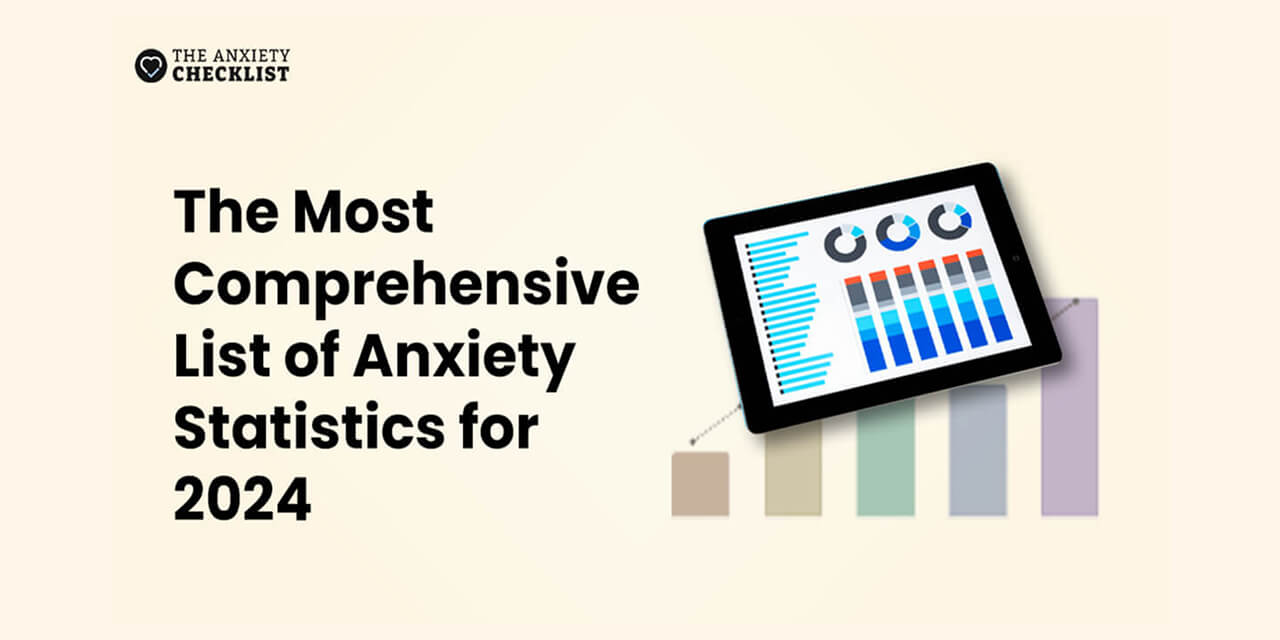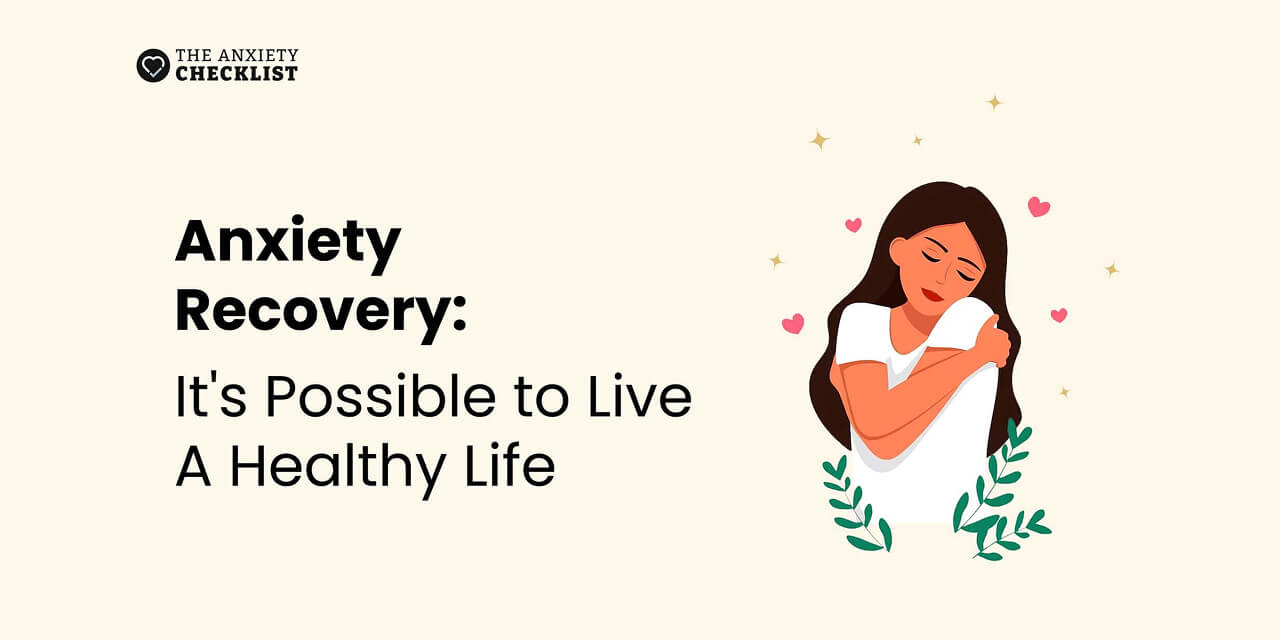Countries with the Highest Anxiety Rates
According to the Global Burden of Disease Study 2019, conducted by IHME, here are the top ten countries with the highest anxiety rates. These numbers are for both sexes and age-standardized.

When anxiety hits, do you know what to do next?
Learn how to calm your body, interrupt fear loops, and regain control step by step.
Here is the global overview from the same study.
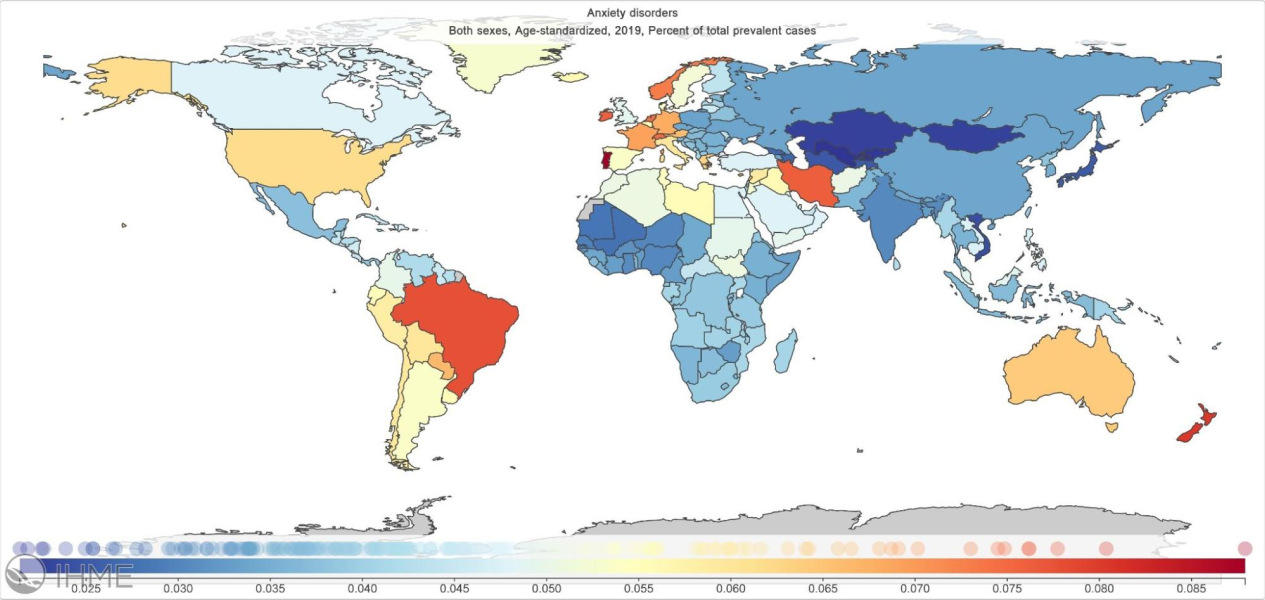
Portugal
- Portugal is the top country in terms of prevalence of anxiety disorder. Since 2019, the percentage of people suffering from anxiety disorders has steadily risen.
- In 2022, 9% of people suffered from an anxiety disorder and 21% suffered from some form of anxiety and depression combined.
New Zealand
- New Zealand has the second-highest rate of anxiety disorders in the world, as per the last IHME data.
- According to Healthify, 1 in 4 New Zealanders experience anxiety at some stage of their lives. The source also mentioned that at any given time, approximately 15% of the population is affected by anxiety.
Brazil
- Since 2019, the prevalence of anxiety disorders has increased to reach 8.1% in 2022, as per Statista. It is the second most prevalent mental health condition in the country after stress and is closely followed by depression at the third spot.
- According to a 2021 survey, 67.2% of respondents (from a sample size of 482 adults) faced symptoms of anxiety. This shows that even if the registered anxiety disorder rates are lower, the share of people experiencing anxiety is much higher.
Iran
- Anxiety, depression, and other mental health disorders are widespread in Iran.
- According to a 2022 survey, 30.1% of the respondents suffered from anxiety and 33.4% from depression. Females in the country are more at risk, especially those who are unemployed or have a chronic disease.
- A more recent study, published in January 2025, found that 42.9% of Iranian people suffer from anxiety. Environmental factors and work-related issues were the most common causes of anxiety, as identified by the study.
Ireland
- As per the previously cited IHME 2019 study, the rates of anxiety disorders in Ireland and Northern Ireland were 7.62% and 7.07%, respectively.
- According to a 2023 study, 58% of adults in Northern Ireland suffer from anxiety that interferes with their day-to-day lives.
- As per Aware's National Survey 2023, 74% of people claim to have experienced anxiety. Females under the age of 44 years are more at risk. Anxiety rates seem to lower with age in Ireland.
Switzerland
- A study published in 2022 showed that the rate of anxiety almost doubled during the COVID-19 time in Southern Switzerland. It increased from 4.8% in August 2020 to 8.1% in May 2021.
Norway
- According to a 2023 survey of Norwegian college and university students, Generalized Anxiety Disorder (GAD) was prevalent among 16.0% of females and 8.2% of males.
- This is much higher than the 7.3% average reported in 2019, as per the IHME study.
Cyprus
- A 2020 research study found that 13.89% of the population in Cyprus suffered from Generalized Anxiety Disorder. This is much higher than the 7.01% reported by IHME in 2019, showing an increase in anxiety during the pandemic.
- Another study from 2020 reported a severely high anxiety score for 9.1% of respondents and a moderate score for 14%. As such, this shows that almost 23% of people were suffering from Generalized Anxiety Disorder in 2020.
France
- As per Statista, as of September 2021, 23% of French people were suffering from anxiety.
- An IPSOS survey from 2021 also shows high anxiety rates among teenagers. The GAD rate was 25% overall, 27% in girls, and 24% in boys.
- Both studies confirm that the anxiety rates significantly increased after the pandemic.
Anxiety Rates and Prevalence in the United States
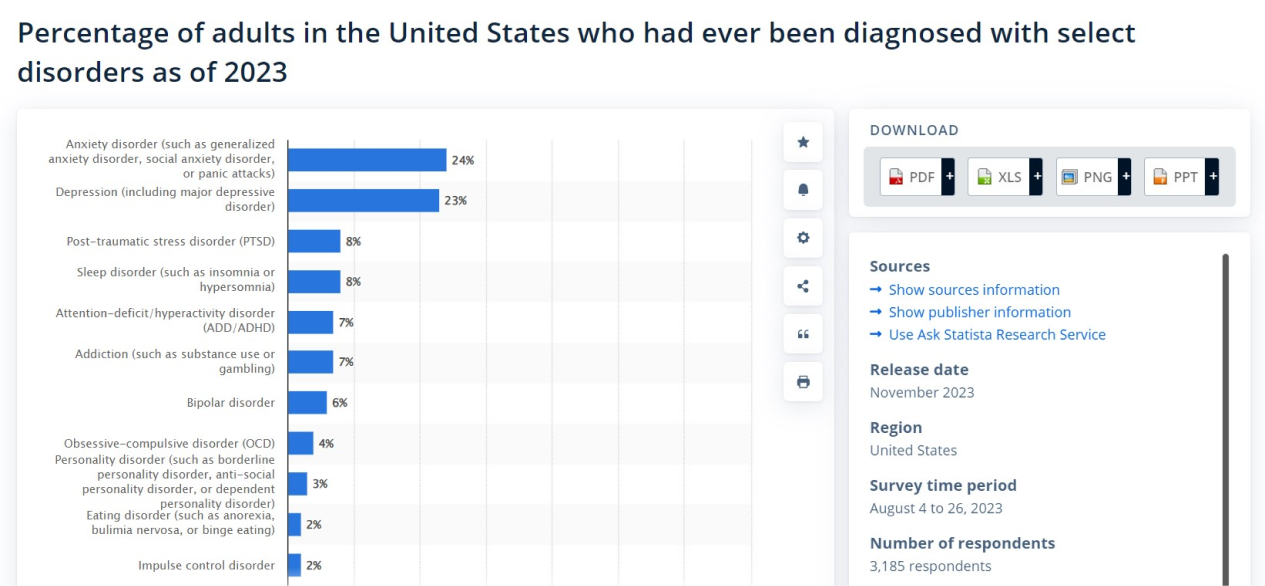


Demographic Factors and Anxiety
- Till now, I’ve established that anxiety is widespread and a considerable share of the global population suffers from it at some point in their lives.
- Now, let’s dissect this further and understand how demographic factors affect the likelihood of anxiety. Are people of certain races, sexes, genders, or ages more prone to anxiety?
- Let’s find out.
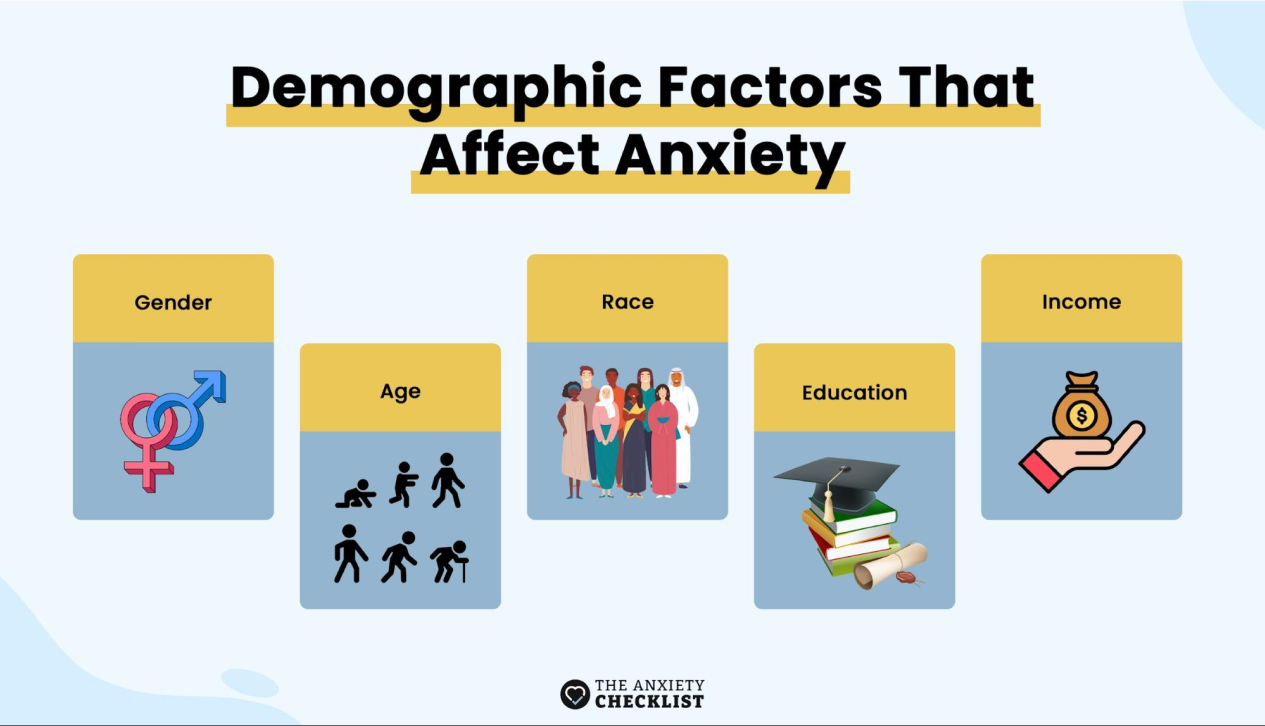
Anxiety Rates by Gender
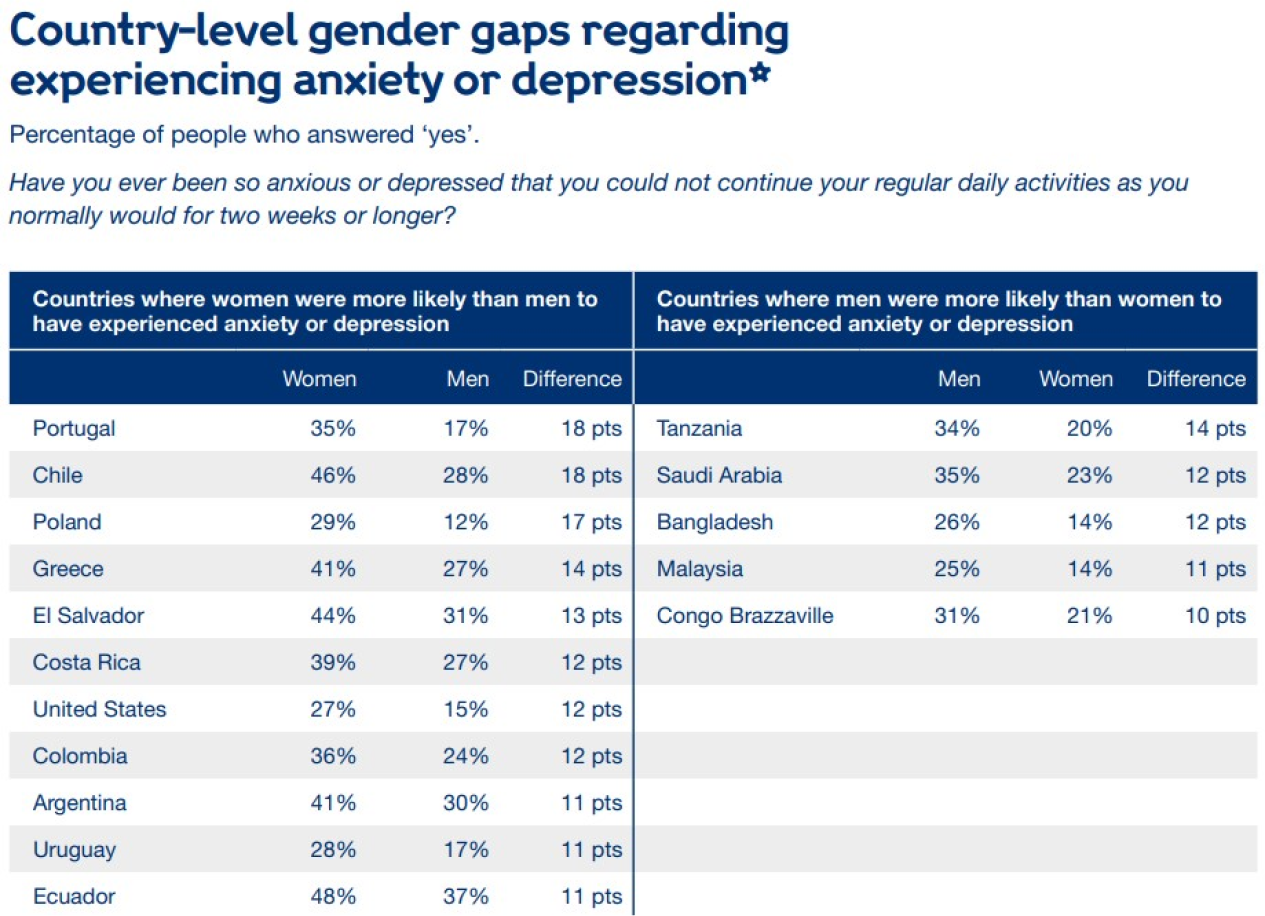
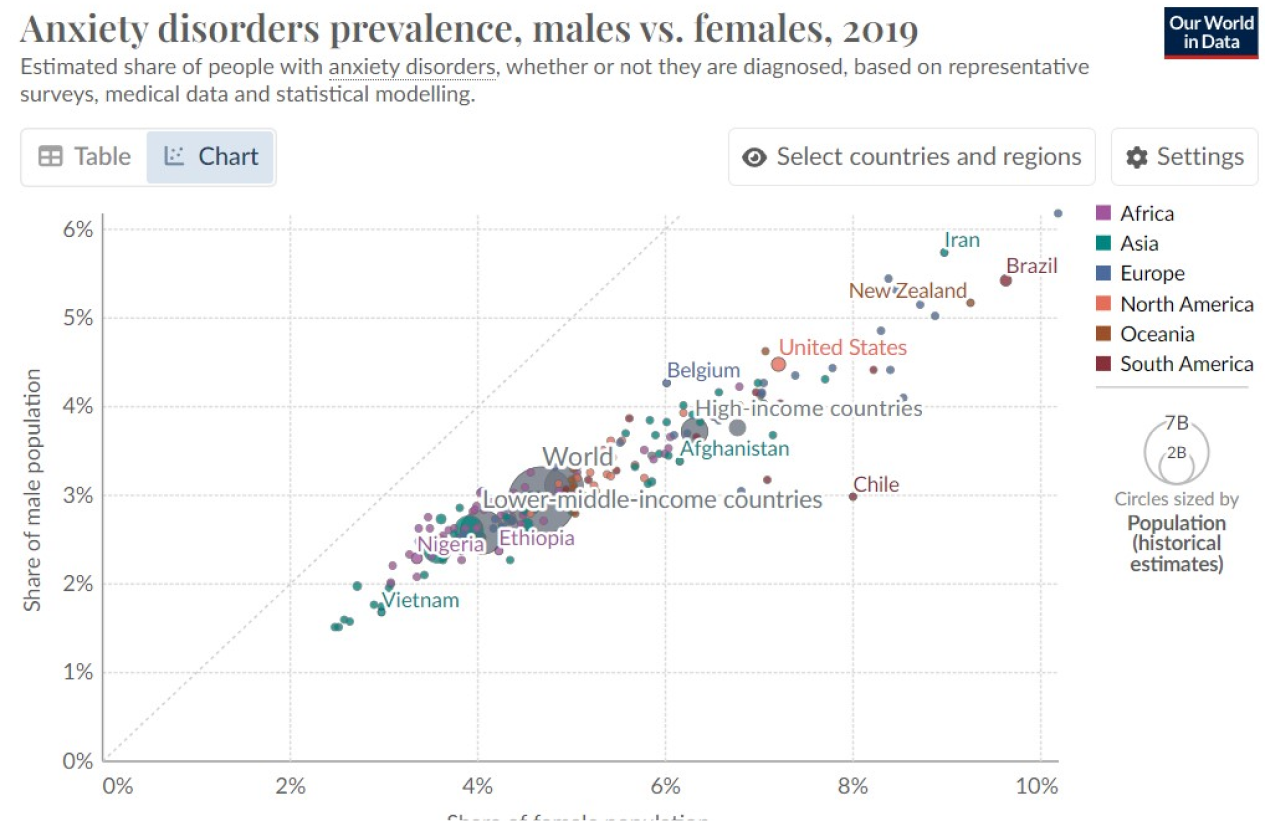
- This also confirms that females are slightly more likely than males to face symptoms of anxiety or develop anxiety disorders.
- However, there are other factors to consider.
Male
- According to the Wellcome Global Monitor report, 18% of men have suffered from anxiety or depression, across the globe. This is just slightly lower than the number for females.
- One probable reason why men do not report they're dealing with anxiety is societal expectations. Men are traditionally expected to be strong, which makes them hesitant to show vulnerability and seek support for anxiety.
- A survey by the Priory Group in the UK confirmed this. According to the survey, 40% of men in the UK do not talk to anyone about their mental health problems and 29% are embarrassed to do so.
Female
- Despite the common perception that more women suffer from anxiety than men, the Global Monitor report found only a slight difference. Globally, 20% of women have dealt with anxiety or depression, compared to 18% of men.
- A scientific research study from 2011, shows that women are more prone to anxiety because they worry more. They're also more severely affected by anxiety because they feel that things are out of their control.
LGBTQ+
- A 2022 report by Wellcome Global Monitor found that LGBT individuals have a 2.5x higher risk of anxiety and depression than others. The study also showed that having strong allies, especially in the workplace, can help alleviate this risk.
- A 2021 study conducted in the UK also reported similar numbers and found that LGBT+ people are twice as likely to suffer from anxiety and other mental health conditions.
- There are many reasons why LGBTQ+ people are more prone to depression and anxiety disorder. The social stigma and discrimination they face are among the top factors. Some others include rejection by their families and social isolation, which lead to feelings of loneliness.
Anxiety Rates by Age Groups

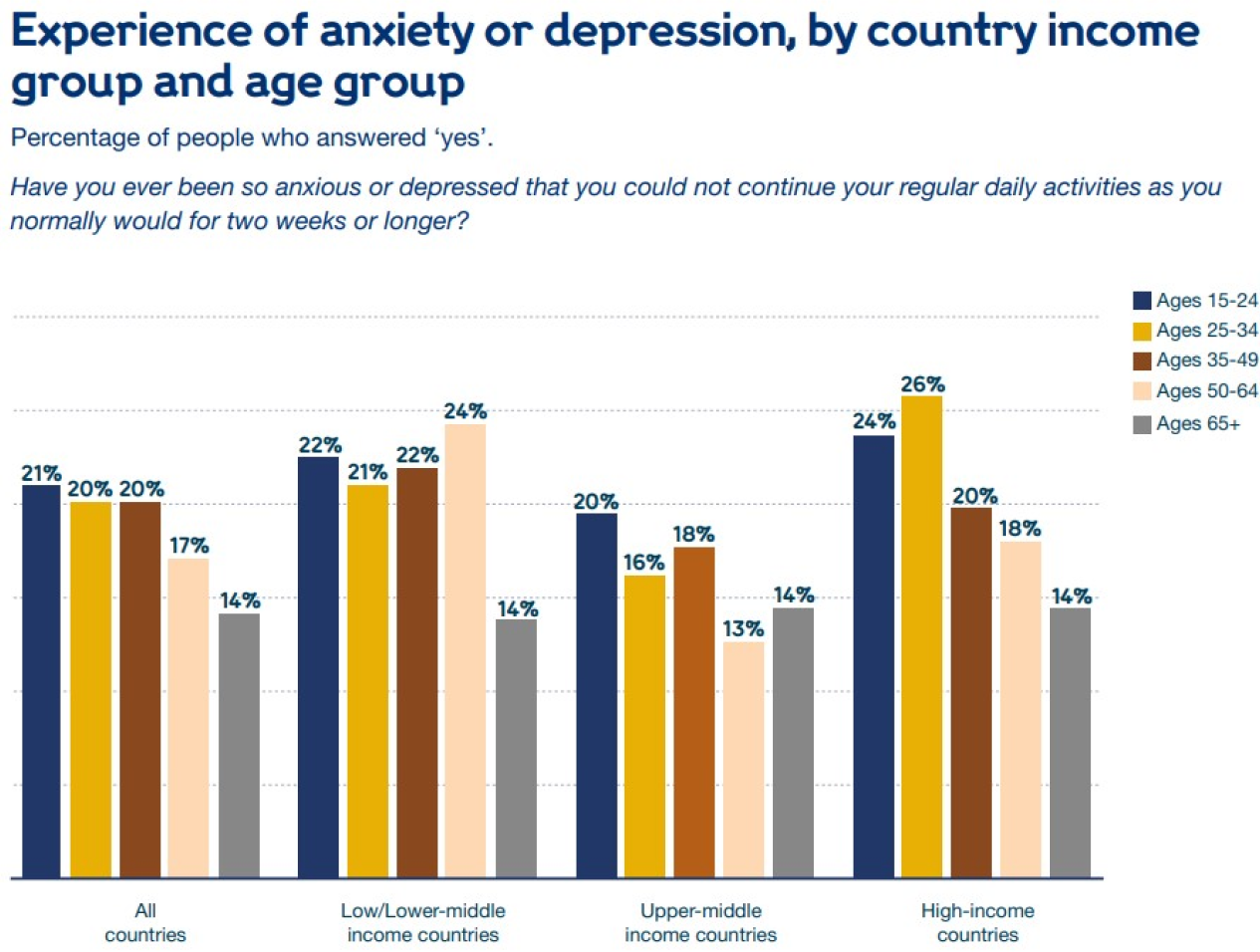
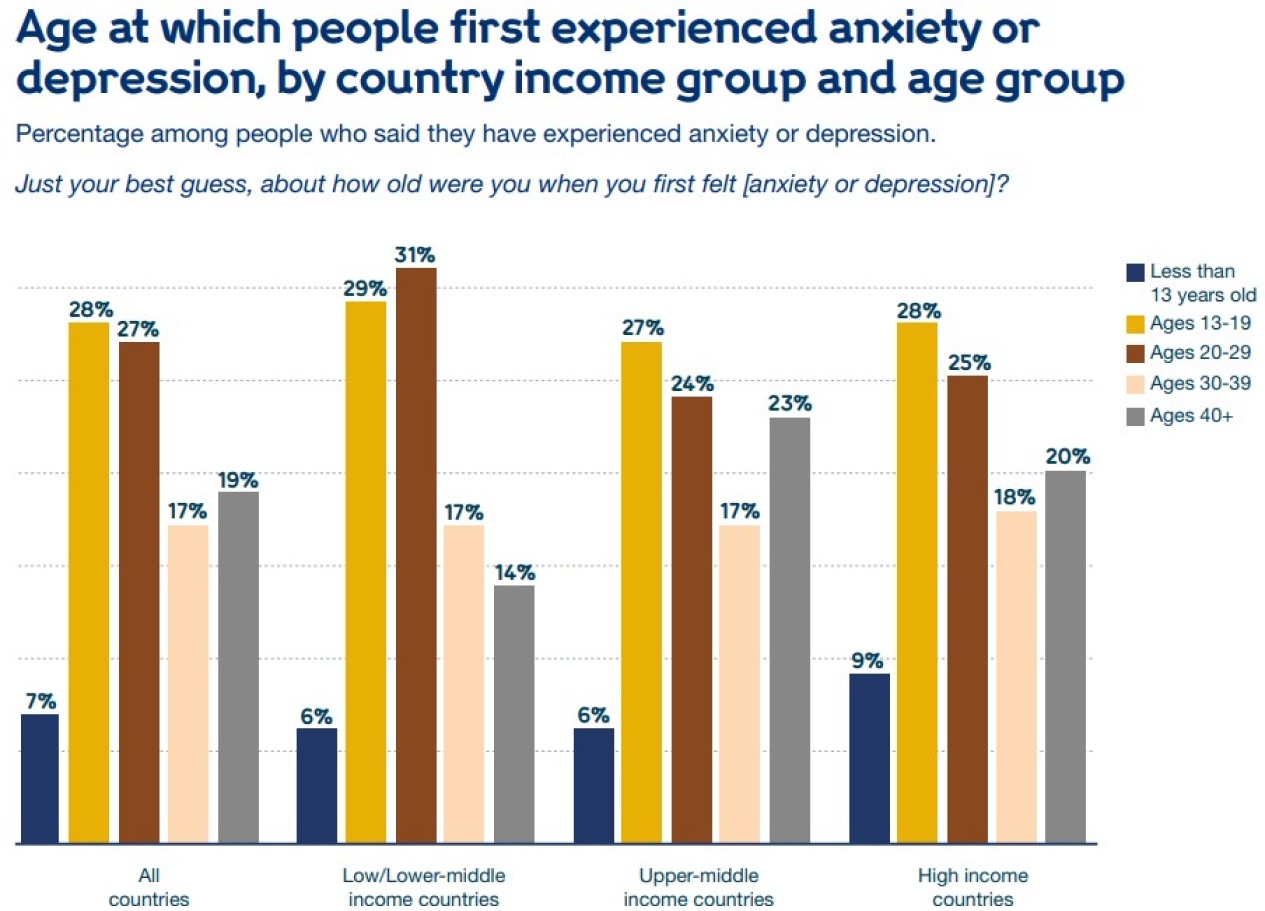
Anxiety Rates by Race
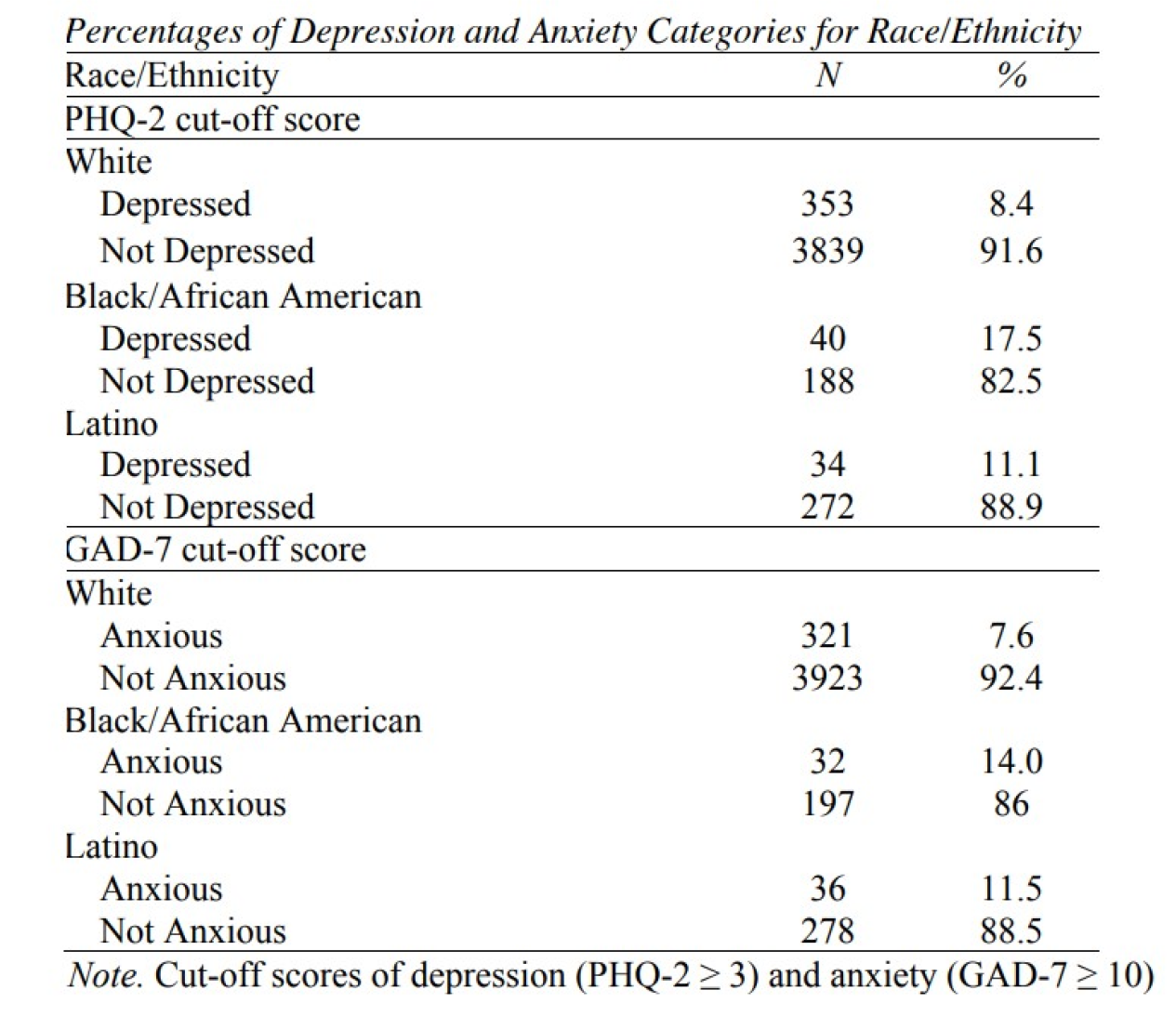
- A 2014 global study found that anxiety disorders are more widespread in post-conflict regions, such as North Africa, the Middle East, and Central Africa. The study shows that there’s a broad range in prevalence of anxiety disorders by region.
- In East Asia, the prevalence rate was 2.1%, while in North Africa/Middle East, it was 6.1%.
- A 2023 study done on adolescents of various ethnicities found that multiracial adolescents are more prone to anxiety than their white counterparts. It also found that multiracial adolescents, such as Asian, Black, and Latinx, also found fewer treatment options.
Anxiety Rates by Education Levels

Anxiety Rates by Income
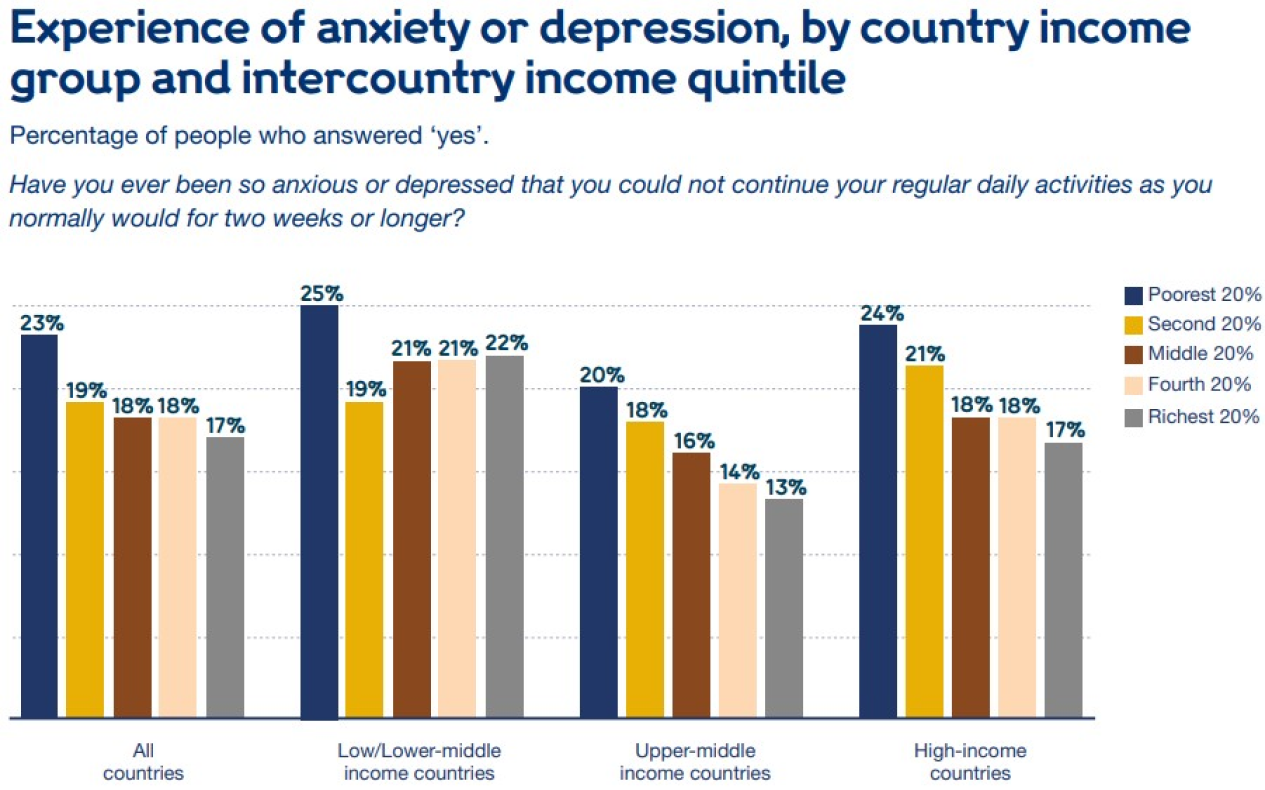

Anxiety Statistics for Workplace Anxiety
- Workplace anxiety and stress have become increasingly common issues over the past decade. New research reveals the concerning extent of this problem and its impacts on employees and employers alike.
- Let's take a look at some anxiety statistics related to workplace anxiety.
The Cry for Mental Health Support

The Economic Toll of Workplace Stress
The Stark Reality for American Workers
Anxiety Statistics by Type of Anxiety Disorders
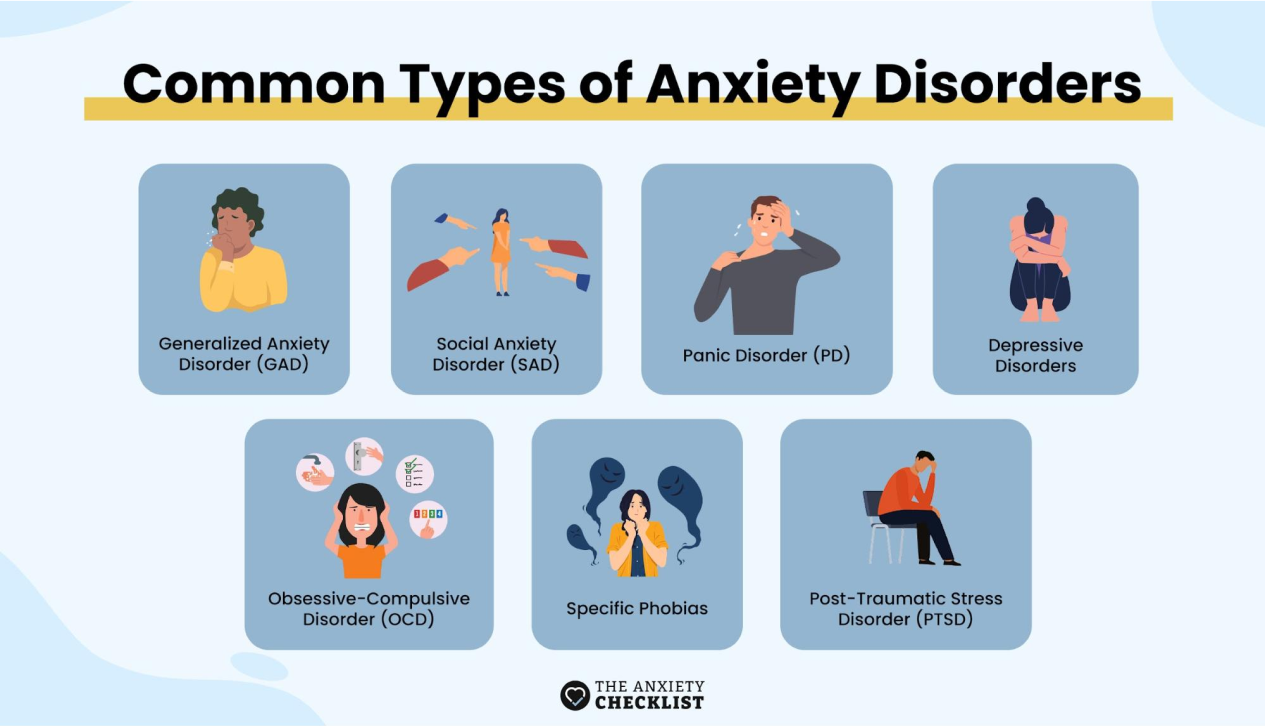
Generalized Anxiety Disorder (GAD)
But which age group is most affected?
Social Anxiety Disorder (SAD)
Panic Disorder (PD)
Depressive Disorders
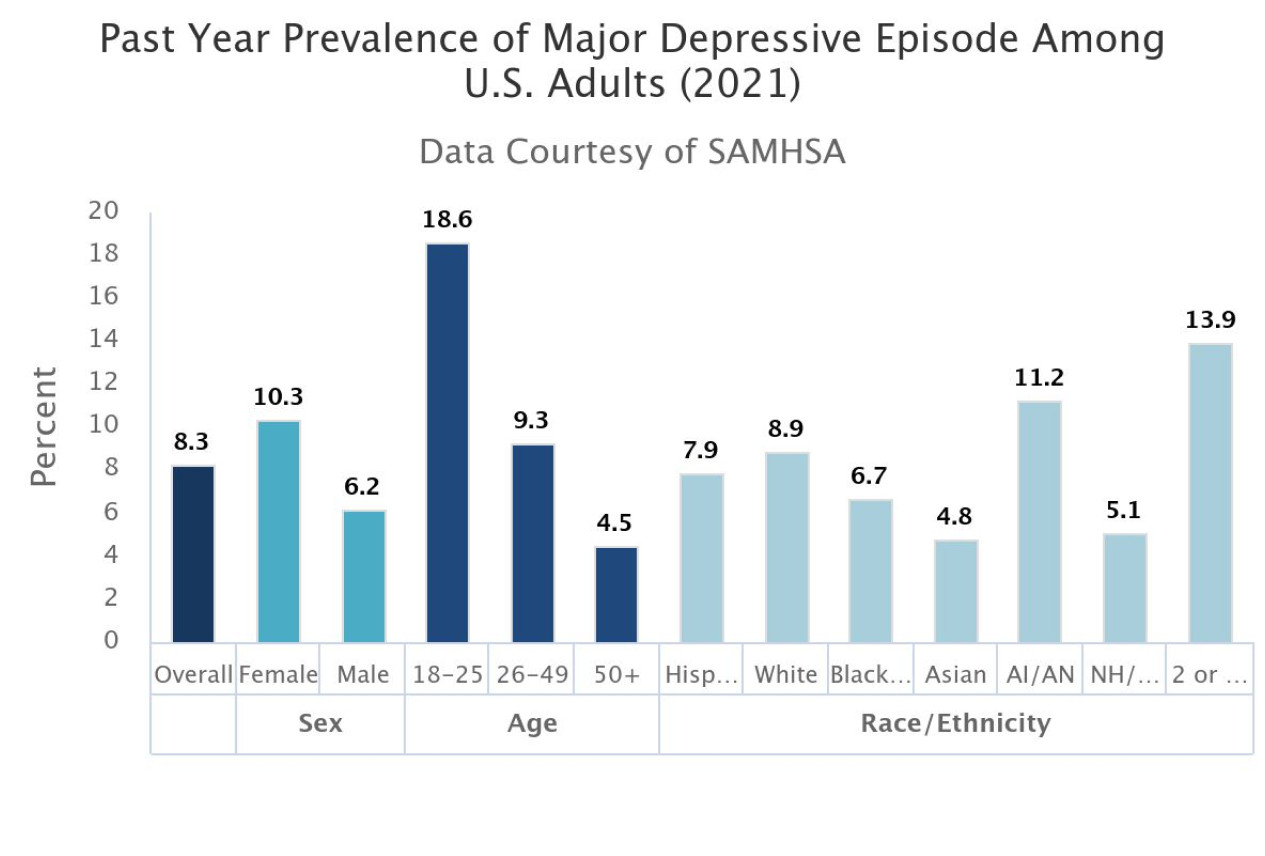
Specific Phobias
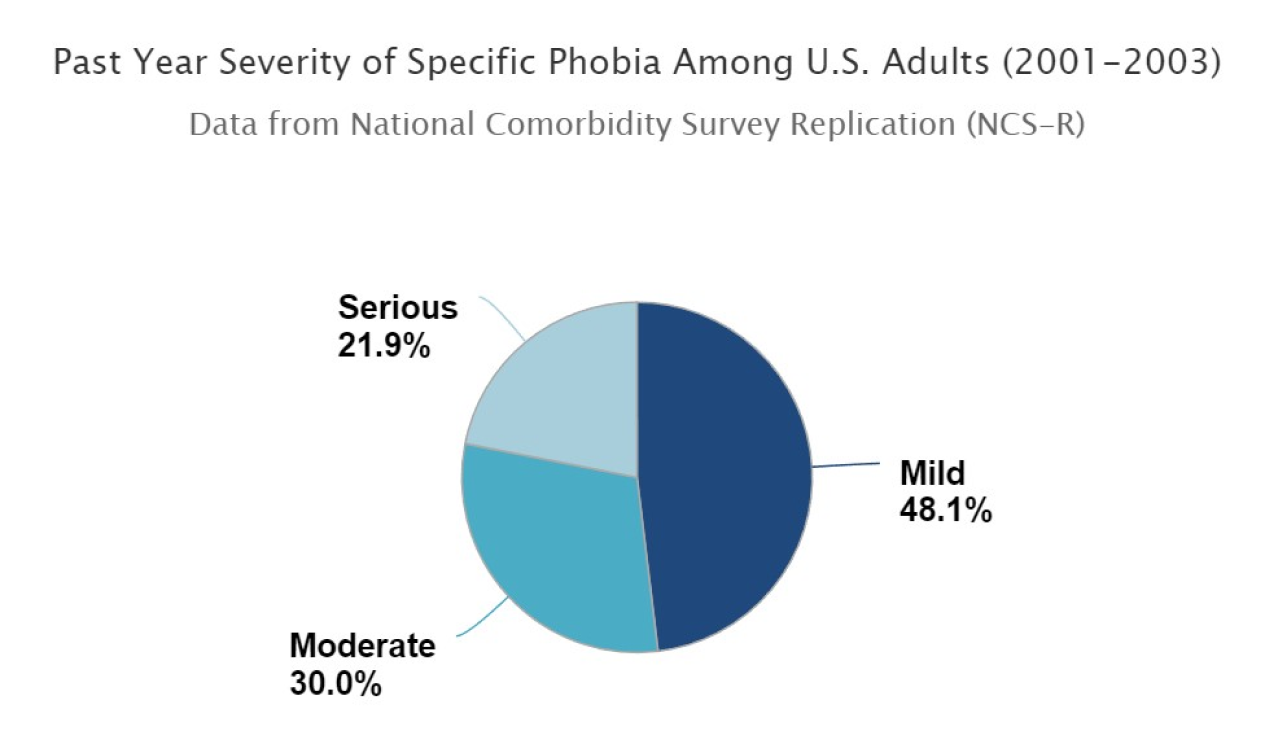
Others
Risk Factors and Triggers for Anxiety
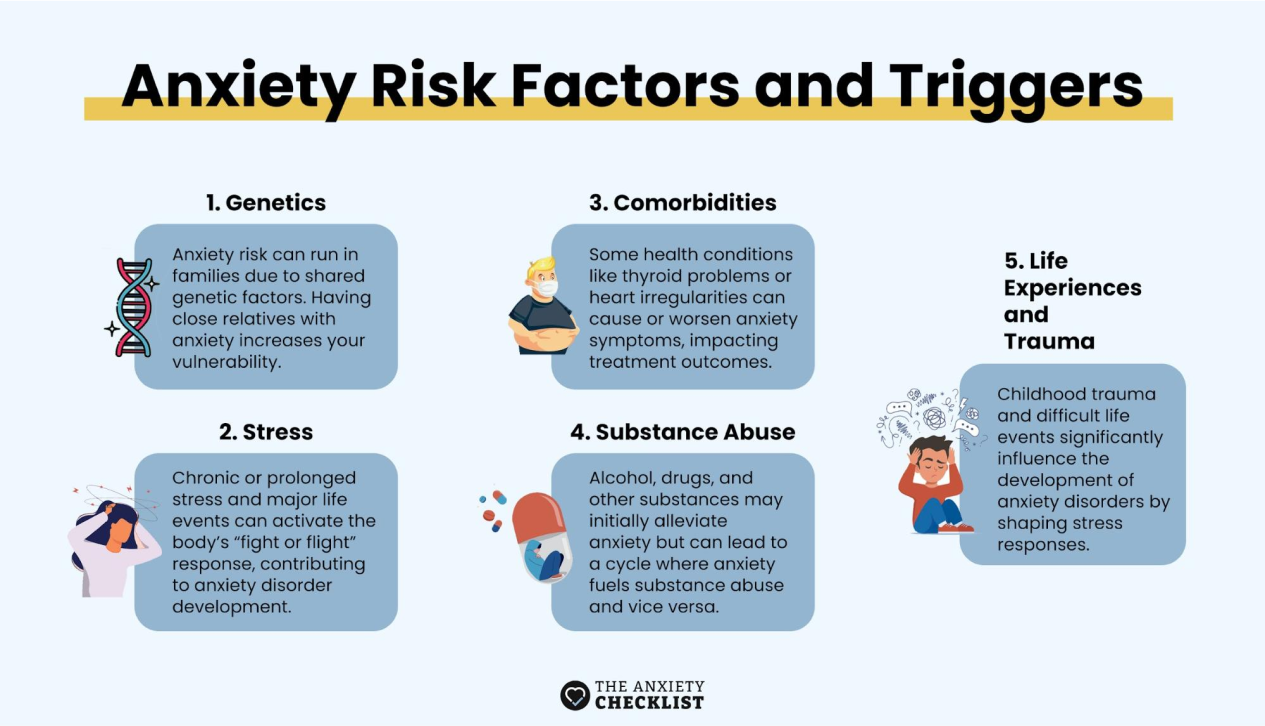
- Anxiety disorders affect people globally, with WHO claiming a 5% prevalence rate of anxiety disorders and Wellcome Global Monitor revealing the actual rates of people dealing with symptoms of anxiety are much higher at 19%.
- But why do some people develop anxiety disorders, while others remain resilient?
- Let’s discuss anxiety statistics related to the key risk factors that make some people more susceptible to anxiety than others.
Genetics
Stress
Comorbidities
Life Experiences and Trauma
Substance Abuse
Impact of Social Media and Technology on Anxiety


Ways to Manage Anxiety




Treatment Options for Anxiety
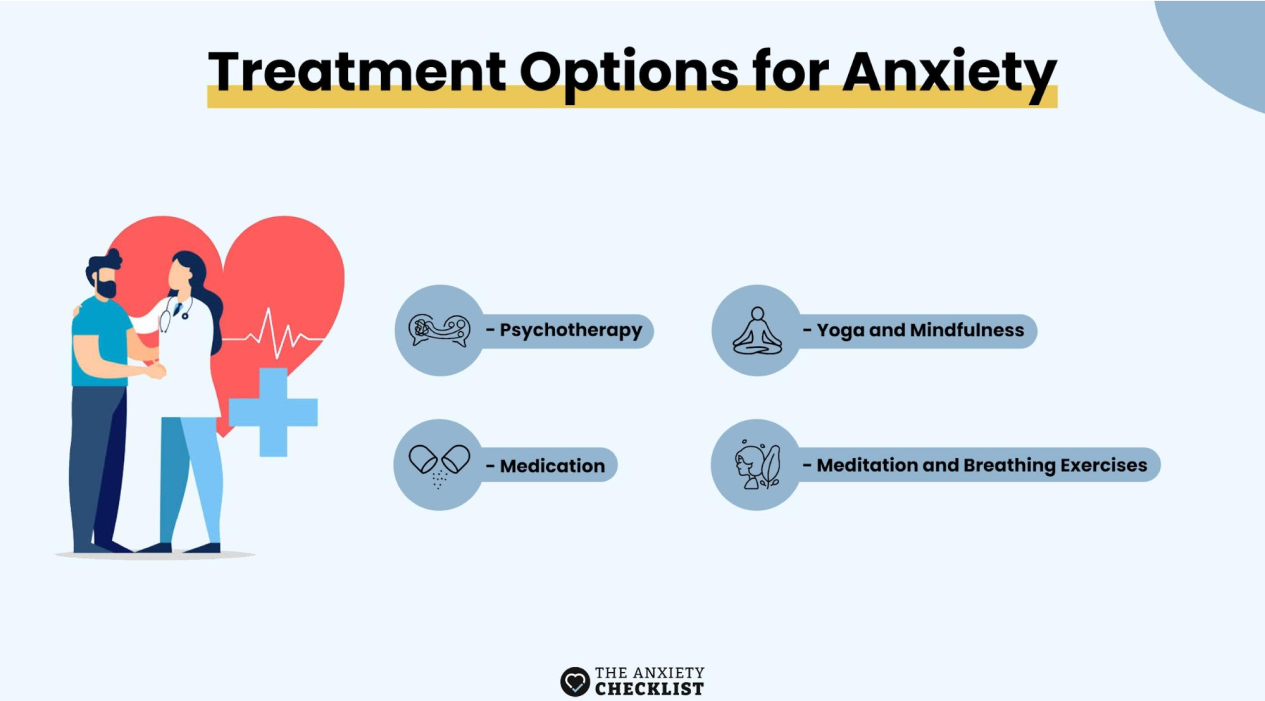
- Parental concerns about the potential adverse effects of social media on their teens’ mental health are also notable. According to a Pew Research Center survey, 53% of the parents surveyed expressed worries about the possibility of anxiety or depression problems arising from social media use.
Psychotherapy
Medication
Yoga and Mindfulness
Meditation and Breathing Exercises
Barriers to Treatment of Anxiety



Stigma

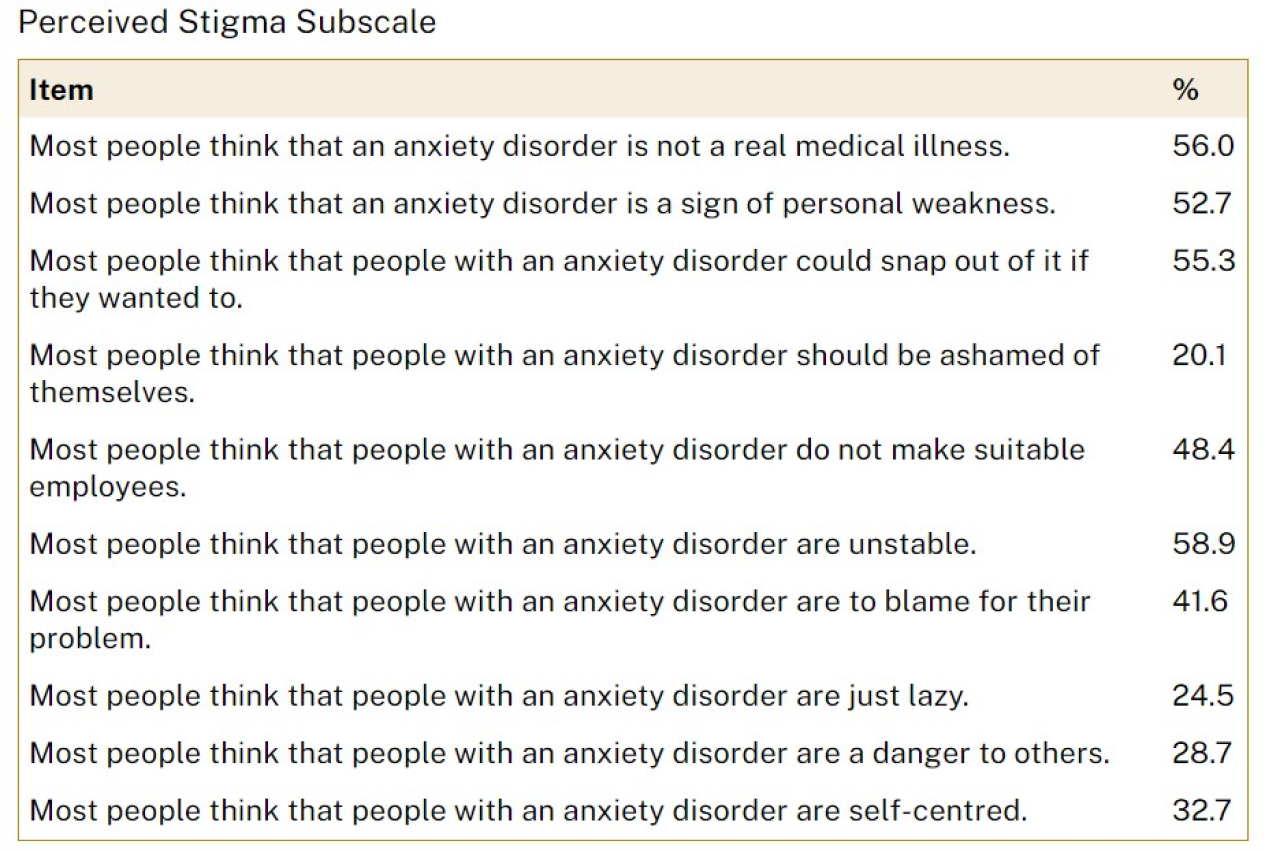
What does this tell us?
Mental Health Literacy
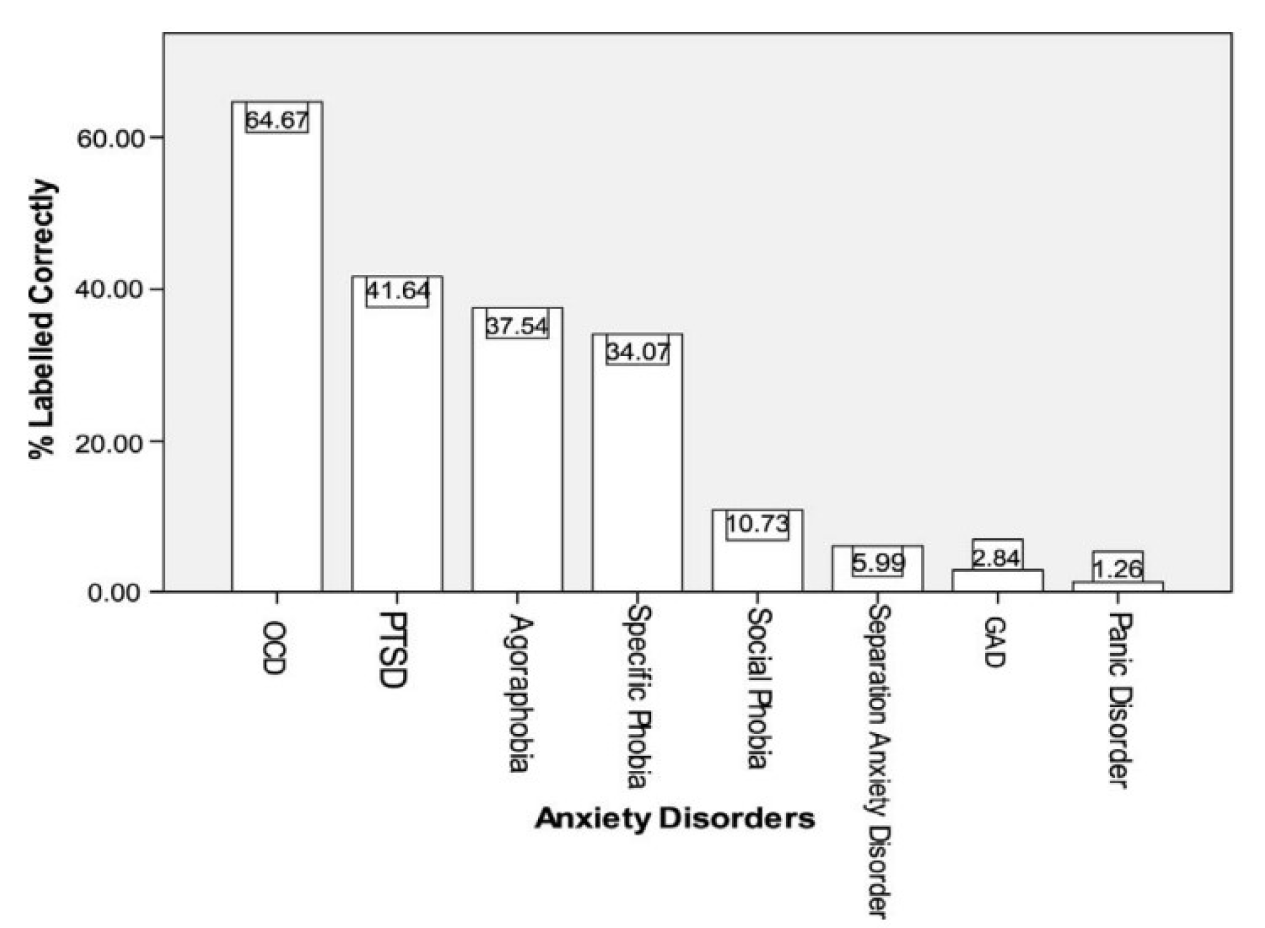

Access to Healthcare
Financial Barriers
Frequently Asked Questions
No data available
No data available
Though there are no conclusive studies, the common factors that cause anxiety include social media addiction, poor sleeping habits, and other lifestyle factors.
Another aspect to consider is that people talk about anxiety and other mental disorders more openly now, due to increased awareness and lower social stigma. As such, we can’t be sure whether anxiety rates have increased or people are simply talking about it more openly.
Another aspect to consider is that people talk about anxiety and other mental disorders more openly now, due to increased awareness and lower social stigma. As such, we can’t be sure whether anxiety rates have increased or people are simply talking about it more openly.
Here are five common symptoms of anxiety:
These are just a few of the symptoms of anxiety. If you feel any of these and more, make sure you do your research and learn to identify anxiety before it takes over your life.
- Feeling restless and jittery
- Having an increased heart rate and rapid breathing
- Having difficulty concentrating on anything
- Having difficulty sleeping
- Being tense or on edge
These are just a few of the symptoms of anxiety. If you feel any of these and more, make sure you do your research and learn to identify anxiety before it takes over your life.
No data available
Conclusion
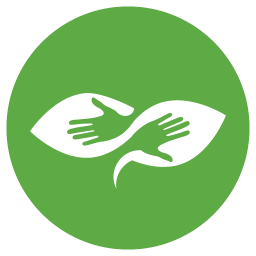
Advertisement
BetterHelp
BetterHelp makes starting therapy easy. Get a tailored therapist match based on your needs and preferences - in as little as 24 hours!
Enjoy 20% off your first month with code "anxietycheck"

4 million+ Helped
Access Therapy 24/7
Preferred by 94% of users
If you are in a crisis or any other person may be in danger - don't use this site. These resources can provide you with immediate help.


